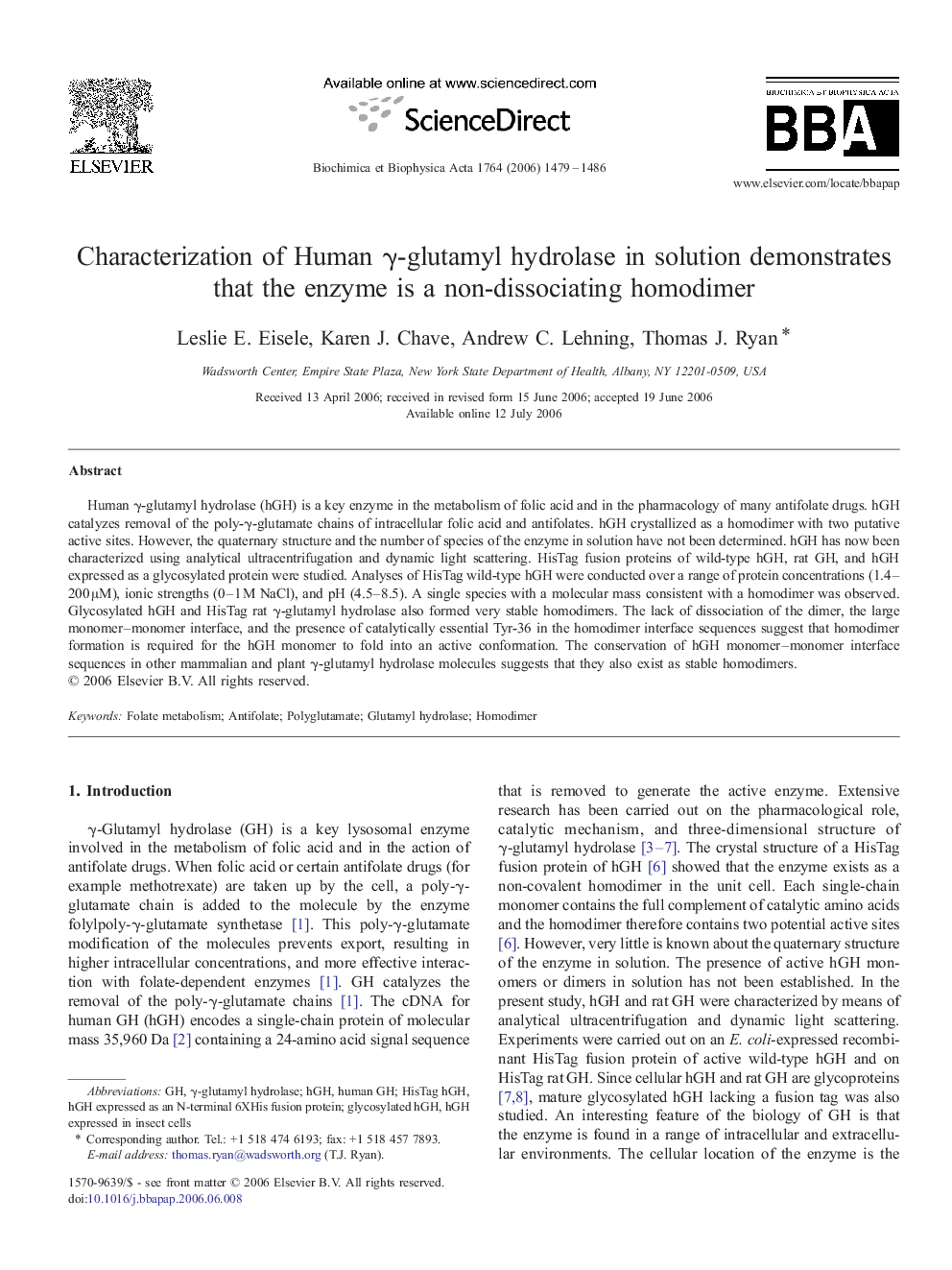| Article ID | Journal | Published Year | Pages | File Type |
|---|---|---|---|---|
| 1179480 | Biochimica et Biophysica Acta (BBA) - Proteins and Proteomics | 2006 | 8 Pages |
Human γ-glutamyl hydrolase (hGH) is a key enzyme in the metabolism of folic acid and in the pharmacology of many antifolate drugs. hGH catalyzes removal of the poly-γ-glutamate chains of intracellular folic acid and antifolates. hGH crystallized as a homodimer with two putative active sites. However, the quaternary structure and the number of species of the enzyme in solution have not been determined. hGH has now been characterized using analytical ultracentrifugation and dynamic light scattering. HisTag fusion proteins of wild-type hGH, rat GH, and hGH expressed as a glycosylated protein were studied. Analyses of HisTag wild-type hGH were conducted over a range of protein concentrations (1.4–200 μM), ionic strengths (0–1 M NaCl), and pH (4.5–8.5). A single species with a molecular mass consistent with a homodimer was observed. Glycosylated hGH and HisTag rat γ-glutamyl hydrolase also formed very stable homodimers. The lack of dissociation of the dimer, the large monomer–monomer interface, and the presence of catalytically essential Tyr-36 in the homodimer interface sequences suggest that homodimer formation is required for the hGH monomer to fold into an active conformation. The conservation of hGH monomer–monomer interface sequences in other mammalian and plant γ-glutamyl hydrolase molecules suggests that they also exist as stable homodimers.
